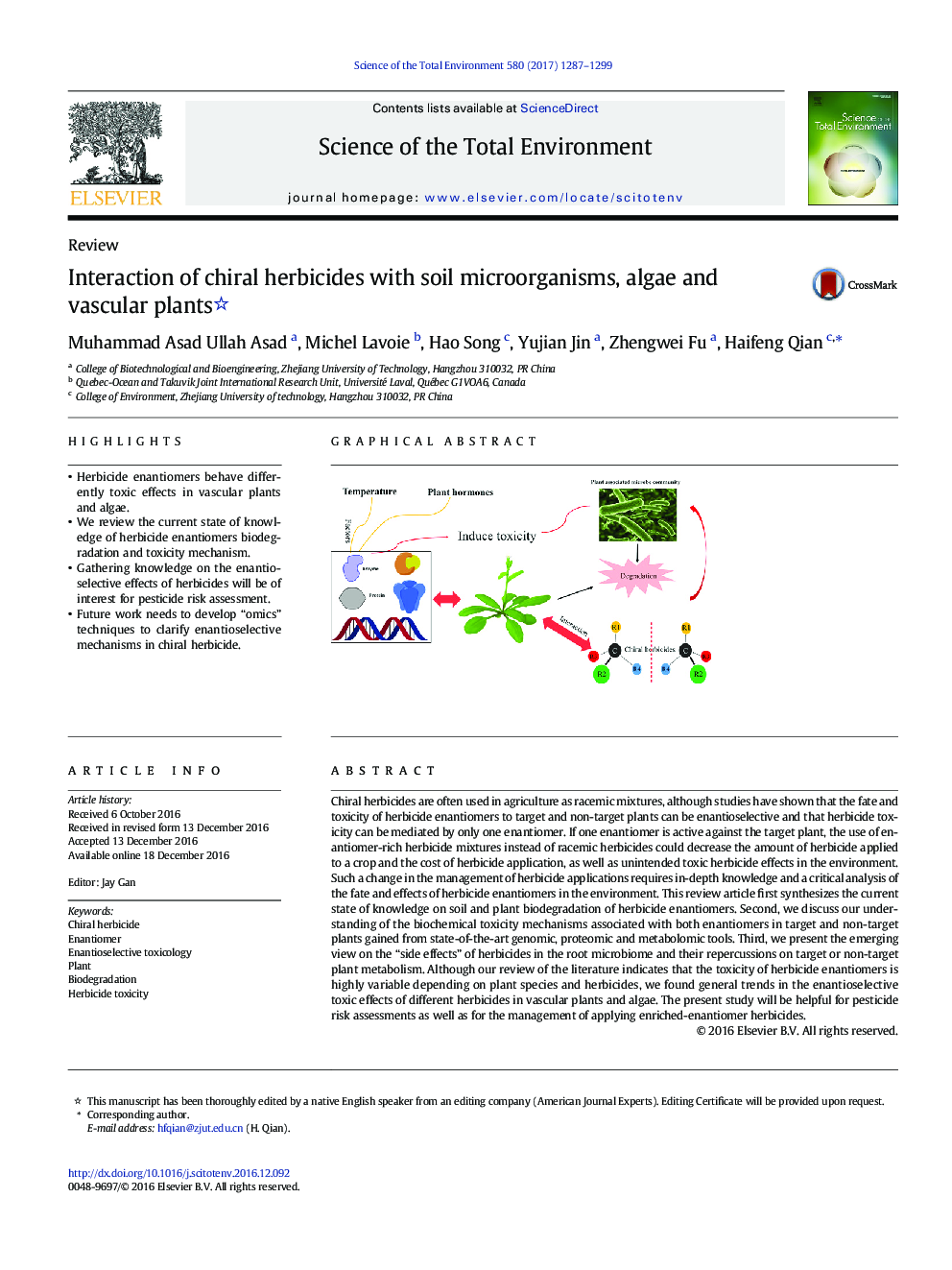| کد مقاله | کد نشریه | سال انتشار | مقاله انگلیسی | نسخه تمام متن |
|---|---|---|---|---|
| 5752042 | 1619711 | 2017 | 13 صفحه PDF | دانلود رایگان |
- Herbicide enantiomers behave differently toxic effects in vascular plants and algae.
- We review the current state of knowledge of herbicide enantiomers biodegradation and toxicity mechanism.
- Gathering knowledge on the enantioselective effects of herbicides will be of interest for pesticide risk assessment.
- Future work needs to develop “omics” techniques to clarify enantioselective mechanisms in chiral herbicide.
Chiral herbicides are often used in agriculture as racemic mixtures, although studies have shown that the fate and toxicity of herbicide enantiomers to target and non-target plants can be enantioselective and that herbicide toxicity can be mediated by only one enantiomer. If one enantiomer is active against the target plant, the use of enantiomer-rich herbicide mixtures instead of racemic herbicides could decrease the amount of herbicide applied to a crop and the cost of herbicide application, as well as unintended toxic herbicide effects in the environment. Such a change in the management of herbicide applications requires in-depth knowledge and a critical analysis of the fate and effects of herbicide enantiomers in the environment. This review article first synthesizes the current state of knowledge on soil and plant biodegradation of herbicide enantiomers. Second, we discuss our understanding of the biochemical toxicity mechanisms associated with both enantiomers in target and non-target plants gained from state-of-the-art genomic, proteomic and metabolomic tools. Third, we present the emerging view on the “side effects” of herbicides in the root microbiome and their repercussions on target or non-target plant metabolism. Although our review of the literature indicates that the toxicity of herbicide enantiomers is highly variable depending on plant species and herbicides, we found general trends in the enantioselective toxic effects of different herbicides in vascular plants and algae. The present study will be helpful for pesticide risk assessments as well as for the management of applying enriched-enantiomer herbicides.
238
Journal: Science of The Total Environment - Volume 580, 15 February 2017, Pages 1287-1299
